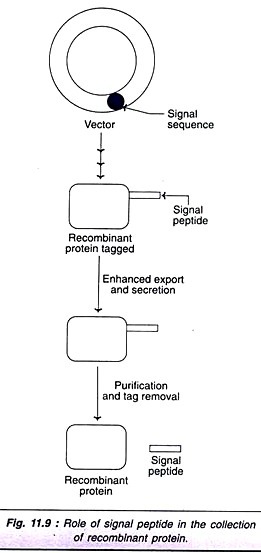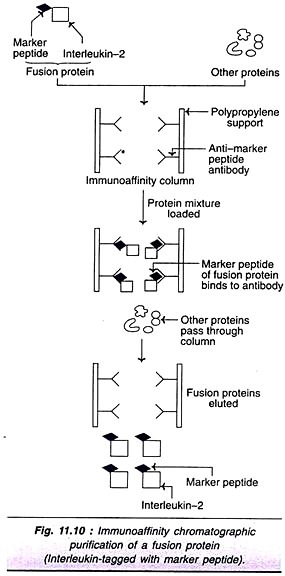ADVERTISEMENTS:
The below mentioned article provides an overview on the androecium of flower.
The androecium is the third set of floral organs composed of stamens or micro- sporophylls.
Ordinarily, each stamen is composed of a slender stalk-like filament supporting a knob-like spore case or the anther .
Each anther consists of two lobes (anther lobes) connected by a connective which can be clearly seen on the dorsal side as an extension of the filament. Each anther lobe, again, has two pollen sacs or pollen chambers placed longitudinally. There are longitudinal grooves or sutures along the ventral face of the anther demarcating the pollen chambers. Each pollen chamber represents a microsporangiur and contains innumerable microspores or pollens.
The stamen, therefore, is a microsporophyll bearing four microsporangia. While this is the normal case, there are some flowers where the anther possesses only two pollen chambers (i.e., bisporangiate) and in Malvaceae even these two pollen chambers fuse developing a mature unilocular anther.
A flower may sometimes be reduced to a single stamen as seen in the cyathium inflorescence .
Filament:
In rare cases a stamen may be devoid of a filament or sessile as seen in the stamens of Arum maculatum . On the other extreme, a stamen may not develop any fertile anther when it is sterile and termed a staminode as seen in Cassia and Canna .
ADVERTISEMENTS:
In the latter case it is also petaloid. The showy labellum of Scitaminae is formed of staminodes. In water-lily the filament is flat showing its transition from petals .
The filament may be white or coloured yellow, blue, black, etc., like petals. While the filament is ordinarily simple, in Ricinus communis it is found to be branched. When filaments are very long, stamens protrude out of the flower and are termed exserted. On the contrary, when stamens remain within the flower; they are termed inserted.
Filaments sometimes bear appendages. Most characteristic of these is the staminal which is horny in Calotropis and cup-shaped in Eucharis , Pancratium and some other flowers of Amaryllidaceae.
Connective:
Ordinarily, the connective is a patch of tissues connecting the two parallel anther lobes .It is a prolongation of the filament and contains the conducting strands.
The connective, however, may be (1) extremely small or altogether wanting as in some species of Euphorbia and in Adhatoda zeylanica (Acanthaceae) where the anther lobes are very close together. This condition is termed discrete.
(2) In the lime tree (Tilia ) and in fusticia gendarussa (Acanthaceae) the connective is called divaricate as it develops in such a way that the two anther lobes are separated from one another.
(3) In Salvia (Labiatae) a pet liar condition called distractile is noticed where the connective is a long stalk-like body placed crosswise on the filament separating the two anther lobes.
ADVERTISEMENTS:
One anther lobe is fertile while the other is abortive, usually represented merely by a deltoid plate.
The connective also may bear appendages when it is called appendiculate. The connective is prolonged into a feathery appendix beyond the sagittate anther of the oleander (Nerium odorum ) and some other flowers of Apocynaceae. These appendices in Nerium unite to form a staminal corona .
Anther:
All Angiospermous anthers are bilobed and quadrilocular (i.e., formed of four micro- sporangia) at an early stage of development and this condition is seen in most mature stamens.
ADVERTISEMENTS:
Rarely, however, the anther becomes unilocular or one-chambered either by the abortion of one lobe and destruction of the portion wall between the two chambers or the destruction of the entire partition tissue separating the four chambers.
This condition is seen in the family Malvaceae . The grooved ventral side of an anther usually faces the gynoecium or the centre of the flower and this condition is known as introrse; but, in a few cases as in Gloriosa superba, Iris, Colchicum, etc., the anther faces the petals when the condition is called extrorse.
Anthers may be linear (Acalypha ), rounded (Mercurialis ), sagittate (Vinca ), sinuous (peculiar -shaped appearance as seen in the cucurbits ), reniform (china-rose ), etc. The anther also may be appendiculate like the connective as may be seen in Erica cinerea of Ericaceae .
Attachment of the Anther to the Filament:
The mode of attachment of the anther to the filament varies . (1) It is adnate when the filament or its continuation, the connective, appears to be attached throughout the whole length of the back of the anther as seen in magnolia and water-lily.
ADVERTISEMENTS:
(2) In mustard, Carex and other members of Cyperaceae, etc., the filament ends just at the base of the anther, the latter being firmly fixed on the top of the former. This condition is called basifixed or innate.
(3) The attachment is dorsifixed when the filament is firmly fixed to some position on the back of the anther as in passion-flower, Sesbania, etc.
(4) In most grasses and in many lilies the attachment is versatile where the filament, is attached merely at a point about the middle of the connective so that the anther can swing on it freely.
Dehiscence of Anthers:
When the anthers become ripe they burst discharging the dry pollens. This act is called dehiscence and the time when this takes place is called anthesis.
Dehiscence may be of different types:
(1) Longitudinal—this is the common type of dehiscence when the anther lobes burst along the longitudinal sutures (i.e., the lines of fusion of the two pollen chambers in the two anther lobes) as may be seen in Datura, etc.;
(2) Transverse —seen in some unilocular anthers as those of Malvaceae (it appears to be transverse as the suture .is placed that way); (3) Porous or apical—-the discharge of pollens is through apical processes seen in potato, brinjal, etc.;
(4) Valvular—when the whole or portions of the wall of the anther Open out like trap-doors releasing the pollens as seen in Berberis, Laurus, Cinnatnomum, etc.
Number and Insertion of Stamens:
A flower may be monandrous (Poinsettia), diandrous (Acanthaceae), triandrous (many monocots), tetrandrous (Labiatae), pentaindrous (most dicots), hexandrous (rice, bamboo, etc.) or polyandrous (Rosaceae) according as the usual number of stamens in the flower is 1, 2, 3, 4, 5, 6 or many. The number of stamens, however, may sometimes vary as discussed later.
ADVERTISEMENTS:
When the stamens form a single whorl and the number of stamens is the same as that of the sepals and petals, the flower is isostemonous. In such a flower the stamens alternate with the petals, i.e.; they are antisepalous.
Occasionally, however, such stamens may be antipetalous as found in different members of Rhamnaceae, Portulacaceae, etc. Sometimes there are two whorls of stamens, the first whorl alternating with petals (antisepalous) and the second whorl alternating with sepals (antipetalous).
This type of flower is termed diplostemonous. A third condition is seen in some Rutaceae where there are two whorls of stamens of which the first whorl is antipetalous and the second whorl is antisepalous. This condition is described as obdiplostemonous.
Like other floral members, stamens also may be epigynous, perigynous or hypogynous in their insertion on the thalamus.
The stamens in an androecium may not be of the same length.
ADVERTISEMENTS:
Two conditions are rather common:
(1) In the family Cruciferae there are six stamens of which the four in the inner whorl are taller than the two in the outer whorl. This condition is termed tetradynamous .
(2) Similarly, it is didynamous when out of four stamens present two are longer than the two others. This is found in Labiatae and the allied families Acanthaceae, Verbenaceae and Scrophu- lariaceae. Presence of stamens of different sizes in the same whorl, as often seen in Cassia flowers, is known as heterostemony.
Union of Stamens:
Union of stamens may involve adhesion (union with other members, viz., petals, perianth leaves or gynoecium) or cohesion, i.e., among the stamens themselves.
When stamens adhere, to petals they are termed epipetalous—a condition found in many flowers. When the adherence is to perianth leaves, the condition is termed epiphyllous as seen in the tube-rose.
Another inteiesting adhesion is between stamens and carpels (gynandrous condidon) as seen in the gynostegiom of Asclepia- daceae and the gynostemium of Orchidaceae .
Cohesion usually involves either only the filaments (adelphy) or only the anthers (syngeny). In adelphy, all the stamens may unite by their filaments forming one bundle of stamens with all the anthers free.
This is the monadelphous condition. In the family Malvaceae and in many other flowers the united filamen’s form a staminal lube through which the long style of the pistil passes.
Oxalis (Oxalidaceae) also show’s a similar staminal tube in which the few stamens are clearly unequal . In unisexual female flowers of Jatropha (Euphorbiaceac), the filaments unite to form a central column.
Diadelphy (two bundles) is very commonly seen in Papilionaceous flowers where rine stamens form one bundle and the tenth remains free as the second bundle .
In the silk-cotton tree (Salmalia or Bombax ceiba) the stamens form several separate groups with the filaments uniting to form several bundles or fascicles giving rise to the polyadelphous condition.
This is often seen in the families Guttiferae, Tilia- ceae, Bombacaceae, Rutaceae (e.g., orange ), Myrtaceae (e.g., Melaleuca ), etc. When the stamens unite only by the anthers leaving the filaments free, the condition is termed syngenesious.
This is characteristically shown by the family Compositae . Here, the syngenesious anthers form a tube enclosing the style and the stigma. In Compositae the syngenesious stamens are also epipetalous .
In the family Cucurbitaceae, of the five stamens four unite in pairs so that the androecium shows three bundles 2+2+1- Each composite structure of two stamens shows complete union of the filaments as well as the sinuous anthers . This is called the synandrous condition.











